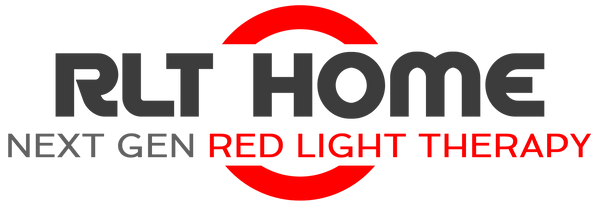850nm Near-Infrared: Deep-Tissue Therapy for Pain, Performance & Brain Support
850nm sits squarely in the near-infrared (NIR) range used in photobiomodulation (PBM). Compared with visible red, 850nm scatters less and penetrates deeper, delivering light to muscles, tendons, joints, peripheral nerves, and - via transcranial PBM - the cerebral cortex. Its primary target, mitochondrial cytochrome-c oxidase, modulates ATP production, nitric oxide, and oxidative stress responses to support pain relief, functional recovery, and cognitive performance.
Table of Contents
Research Summary (Human-focused, 850nm): From your curated dataset of 225 studies:
- Very successful: 99 (44%)
- Somewhat successful: 62 (28%)
- No effect: 64 (28%)
Overall success: 161/225 ≈ 72%. Outcomes are dose- and protocol-dependent.
Bioequivalent Wavelengths: 840–860nm NIR Window
850nm shares optical and biological behavior with nearby NIR wavelengths (e.g., 840/855/860nm). When dose is matched, clinical effects are often similar due to overlapping absorption spectra and tissue optics. Compared with 660nm, 850nm reaches deeper targets and is widely used for performance, musculoskeletal, and transcranial applications [1][5].
Conditions Benefiting from 850nm
- Brain & cognition: attention/EEG changes, working memory and alertness signals, cerebral blood flow increases with prefrontal tPBM [1][2][4][5]
- Mood & stress: symptom improvements in small clinical cohorts when delivered over multi-week programs [3][4]
- Exercise & performance: reduced soreness (DOMS), strength retention, hamstring flexibility/endurance adjunct benefits [6][7][9]
- Tendinopathies & joint pain: pain/function gains in lateral epicondylalgia and knee osteoarthritis as an adjunct to rehab [8][10]
- Spine care: adjunct support in neck and lumbar pain programs [12][13]
Applications in Brain & Cognition
Prefrontal 850nm tPBM has shown site-specific cognitive and perfusion effects in humans, with signals for attention/alertness, working memory, and regional cerebral blood flow. Effects can appear within a single session and may persist beyond the stimulation window [1][2][5].
Site-Specific Cognitive Effects
Forehead illumination studies at 800–850nm report location-dependent impacts on cognitive measures, consistent with targeted prefrontal engagement [1].
Older Adults & Clinical Cohorts
Transcranial PBM in older adults and clinical groups shows improvements in cognitive/mood metrics when delivered in multi-week schedules [2][3].
Cerebral Blood Flow
Human imaging work demonstrates focal increases in cerebral blood flow following prefrontal NIR PBM, supporting mechanistic plausibility for cognitive benefits [5].
Applications in Muscle, Joint & Pain
850nm is frequently used on large muscle groups and tendon insertions due to deeper reach and favorable energy delivery to myocytes and chondrocytes.
Exercise Recovery & Conditioning
Pre-/post-exercise PBM has been associated with less soreness and preserved performance; pairing PBM with stretching or training tasks can magnify functional gains [6][7][9].
Lateral Epicondylalgia
Repeated PBM sessions reduce pain and improve function, particularly when combined with exercise/manual therapy [8].
Knee Osteoarthritis
Adjunct PBM reports improvements in pain and functional outcomes versus control or standard care alone in knee OA cohorts [10].
Applications in Spine Care
PBM has been tested as part of multimodal care in cervical and lumbar pain, including randomized and comparative designs.
Neck & Low-Back Programs
Studies using NIR PBM as an adjunct report pain reduction and improved function/ROM in neck and low-back pain programs [12][13].
Applications in Surgical, Dermatology & Dental
Postoperative & Regional Pain Syndromes
Customized 850nm-inclusive PBM programs show pain modulation in clinical cohorts and as adjuncts after procedures [11][14].
Dermatology & Aesthetic Recovery
Combined visible + NIR LED has been used to enhance healing and comfort after aesthetic procedures, supporting early-stage recovery [15].
Choosing an LED Device for 850nm
When selecting from the various red light therapy devices on the market, it's important to consider a few key factors for 850nm.
RLT Home panels in the Total Spectrum series include a high density of the 850nm wavelength alongside 630/660/810/830/1064nm to cover surface and deep targets.
- Clinically relevant irradiance at distance for practical session times
- Uniform LED density for even dosing across large areas
- Pulsing + continuous modes to match literature-informed protocols
- Low flicker, low EMF and precise wavelength calibration
- Multi-wavelength synergy to span all tissue depths
Safety & Dosing Notes
Human studies report a favorable safety profile for 850nm. PBM follows a biphasic dose response: too little may be ineffective; too much can blunt gains. Start conservatively, progress based on response, and keep frequency consistent. For detailed instructions, refer to our official Total Spectrum Usage Guide.
- Consult a clinician if pregnant, photosensitive, on photosensitizers, or under oncology care.
- For transcranial use, avoid direct eye exposure and keep sessions within conservative time windows.
- Use as an adjunct to standard medical care.
References
- Site-specific effects of 800–850nm forehead illumination on cognition
- Transcranial photobiomodulation in older adults (cognition-related outcomes)
- Case-control series: PBM in chronic pain with depression
- Transcranial PBM and stress-related symptom improvement
- Focal increase in cerebral blood flow after prefrontal NIR
- Muscular pre-conditioning with LEDs: performance/DOMS
- PBM + static stretching: flexibility/functional effects
- Pain relief & functional recovery in lateral epicondylalgia
- LED therapy on hand muscle performance
- PBM as adjunctive treatment in knee osteoarthritis
- Customized PBM modulates pain and function (clinical cohort)
- Comparative PBM protocols in chronic neck pain
- High-intensity vs. low-level laser in musculoskeletal pain (randomized)
- Postoperative pain/swelling control with LED/NIR (clinical)
- Combined visible + NIR LED after aesthetic procedures







